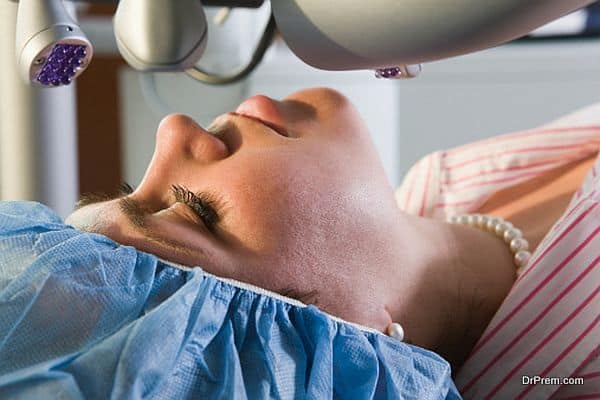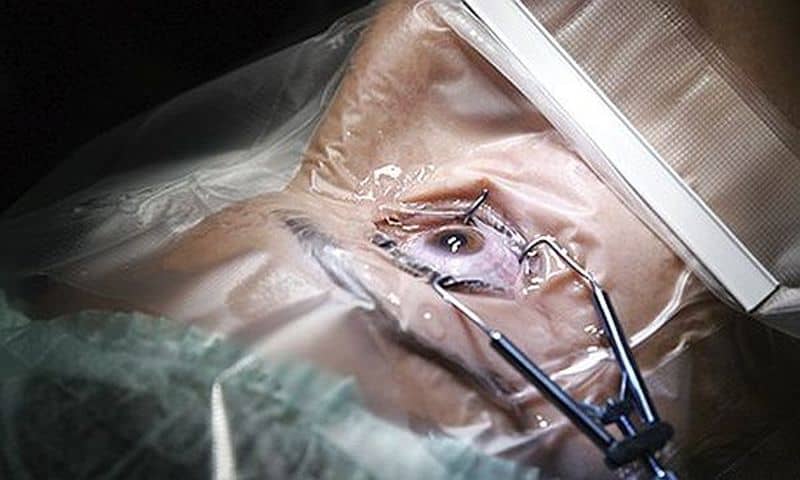Dealing with poor eyesight can be a lifelong struggle. While corrective lenses can help you read or see further distances, it can be a pain to carry around and wear your glasses or to change your contacts every day.

How Does a Clear Lens Exchange (CLE) Work?
A clear lens exchange, sometimes called a refractive lens exchange, works similar to cataract surgery—except there are no cataracts present. In this surgery, a doctor will cut the edge of your cornea, then remove the lens of your eye, which naturally focuses light so you can see. Then, the lens will be replaced with a specially manufactured plastic lens implant, which will allow you to focus light correctly.
In cataract surgery, this process is used to replace a lens that has become cloudy, obscuring your vision rather than just interfering with your ability to focus. Generally, cataract surgery is a requirement, but CLE is an elective procedure. This procedure is somewhat standard, and is categorized as an outpatient procedure. It takes about 15 minutes to complete and relies on numbing anesthetic eyedrops, so you won’t experience any discomfort or pain during the procedure.
Many patients report an immediate improvement to their vision after surgery. However, the initial recovery period for this procedure is about a week. After that, patients may resume normal daily activities. However, the full recovery process for the procedure can take up to a few weeks; during this period, you may notice some minor visual disturbances like a “halo” effect, additional glare, or blurry vision. Some patients also temporarily notice an itching sensation in the eyes as they heal. Though rare, if you do experience severe side effects, or negative side effects longer than the designated recovery period, you should contact your doctor immediately.
Who Is a Good Candidate for Clear Lens Exchange?

Common clear lens exchange candidates include:
- Patients over 40. Older patients may have a longer recovery period for LASIK surgery, or may not be in a position to qualify for the procedure. However, a clear lens exchange is still an option.
- Patients with certain prescriptions. Patients with extreme vision prescriptions may not see enough of an improvement to their vision with a normal LASIK procedure. A CLE may be able to correct these problems.
- Patients with thin corneas. LASIK relies on performing a precise surgical operation on the cornea of the eye. If your corneas are thin, this may not be advisable. Replacing the lens may be better for your eyes.
- Patients with early-onset cataracts. If you have the early signs of cataracts in addition to poor vision, you may elect to have a CLE done proactively, so you aren’t forced into the procedure when the cataracts get worse.
Types of IOLs Available
The clear lens exchange (CLE) will replace your natural eye lens with an artificial intraocular lens (IOL) so that your refractive errors can be corrected. There are three types of IOLs available, including:
- Monofocal, fixed-focus IOLs. These lenses have a fixed point of focus, so they could help you see better at a distance, see midrange objects better, or help you see up close (like when reading), but only one of these distances. Among these type of IOLs are Toric IOLs, which are designed specifically to correct astigmatism.
- Multifocal IOLs. A multifocal lens is for people with vision problems at multiple distances. It can help you see at near, midrange, and far distances.
- Accommodating IOLs. Accommodating IOLs are technically classed as monofocal lenses, but they can allow a patient to see clearly at multiple distances by shifting how it’s positioned within the eye.
Your eye surgeon will likely recommend the most appropriate IOL for your condition.
CLEs aren’t recommended for every person with a vision problem, but for those with early onset cataracts or those who don’t qualify for normal LASIK surgery, they can be an instant and permanent way to improve your vision.
As always, make sure you talk to your doctor about your options before deciding on treatment.
Article Submitted By Community Writer




